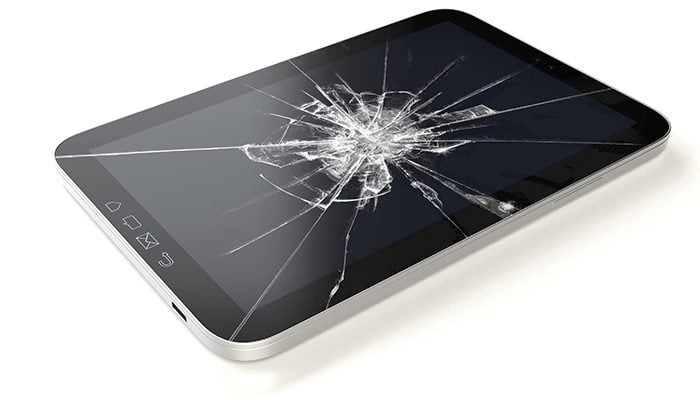TALKING TOUGH: FOCUS ON TOTAL COST OF OWNERSHIP
Jan 28, 2016 • Features • Hardware • Consumerisation of IT • Getac • hardware • rugged mobile devices • Total Cost of Ownership
Field service companies tempted by low-priced consumer mobile devices should focus on Total Cost of Ownership, says Peter Molyneux, UK President, Getac, the rugged laptop, tablets and handheld manufacturer.
The more numbers after the £ sign, the greater the likelihood of the specifier or procurement team to switch off to the technology - but it's a switch-off that could result in a significant unplanned-for cost rather than the planned expected saving.
The challenge facing all technology providers - as public sector strips costs to the bone, and business, still nervous about the economy, caps technology budgets - is breaking customers' focus on the short-term bottom line.
Take the single day on which a purchase is made of maybe several hundred consumer-based tablets in ruggedised cases for field service use - many procurement departments will likely believe it's a discounted deal well done. But three years on, that consumer-based equipment will have cost far more than forecast in comparison to initially more expensive purpose-designed and -made rugged tablets or laptops.”
It's an awkward fact that many buyers of technology - tablets or laptops - don't have the detailed knowledge of the field performance differences between a built-for-purpose rugged unit, and a consumer-based unit with a protective case.
We have seen consumer-market brand technology failures of up to 30% a year when used in punishing, critical working environments
There are some good consumer products working well in lighter-duty business and emergency service applications, but consumer technology is simply not designed for the daily demands of specifically critical working environments experienced by field service sectors.
The issue is that while rugged technology is a longer-term investment, business and public sector alike are understandably taking a short-term view on spending based on their currently extremely tight budgets.
However, there's a core of businesses and public sector bodies who have had their epiphany and realised that total cost of ownership of rugged computers is lower than consumer-based over the field life. However, there is also a surprising number of businesses and organisations who still buy outright rather than lease – with leasing offering reduced total cost and monthly cost against capex.
Estimation of total cost of ownership of consumer technology in critical working environments should be based on the expected working life of the device chosen - typically three years. This needs to include both the direct costs of purchase and the indirect costs of service and support. Longevity of supply and support of the device in the field must also be taken into consideration: consumer technology refreshes every six to eight months and therefore may not be supported across the duration of the project.
A consumer-market tablet cost of £550 including a 'rugged' case would typically return an annual field failure level of 25%, and possibly more, when used in demanding working environments. A purpose-built rugged tablet will cost £1,500 with a three-year warranty and support package, and have an expected field failure rate sub-3% over that three years. That's three times or so the initial cost, but a significant improvement on operational life expectancy, and minimum down-time in the field.
Rugged equipment isn't just more resilient but has features not available in consumer-facing products – high performance RF antennas and accurate GPS, and a higher level of integration, for example a 1/2D bar code reader.
In practice, that means downloading data faster or maintaining network connection in areas where consumer-based technology will not. It can mean finding the location of equipment needing attention faster and more accurately.
Operational efficiency and true mobility is delivered by a built-for-purpose feature set of which ruggedisation is just one component.
We speak from experience: we regularly support customer field trials and business case completion to ensure understanding of the total cost of ownership and return on investment in rugged technology versus consumer products.
There are two issues when it comes to using technology in the field: does it have the features and technical capability to allow a field service professional to do their job, but, crucially, does it have the resilience to keep working in sometimes extremely hostile environments? The fact is that even good consumer-market tablets and laptops, even if they are in toughened cases, will fail to perform in a demanding working environment.
Purpose-built rugged technology, such as produced by Getac, has features designed specifically for harsh environments. Not only does it survive drops, impacts and exposure to liquids, but it has performance - and the service and support infrastructure - which is simply not readily available on consumer technology.




















 Field Service News is published by 1927 Media Ltd, an independent publisher whose sole focus is on the field service sector. As such our entire resources are focused on helping drive the field service sector forwards and aiming to best serve our industry through honest, incisive and innovative media coverage of the global field service sector.
Field Service News is published by 1927 Media Ltd, an independent publisher whose sole focus is on the field service sector. As such our entire resources are focused on helping drive the field service sector forwards and aiming to best serve our industry through honest, incisive and innovative media coverage of the global field service sector.
Leave a Reply